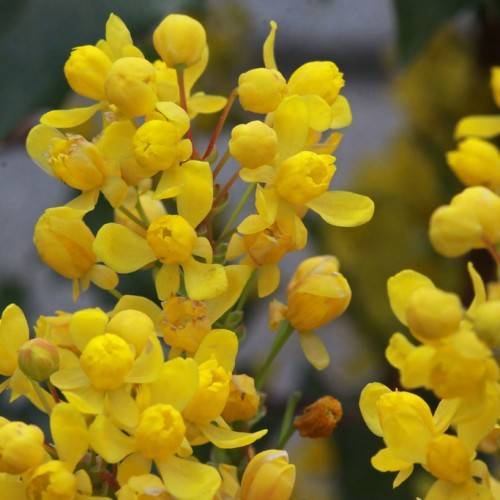
Oregon grape
Mahonia aquifolium ( syn. Berberis )
Cycle:
Perennial
Watering:
Minimum
Hardiness Zone:
7
Flowers:
Flowers In Winter
Sun:
Deep shade, Filtered shade, Full sun, Part sun/part shade
Soil:
Acidic, Humus rich, Well-drained
Cones:
Yes
Leaf:
Yes
Growth Rate:
Moderate
Maintenance:
Low
Drought Tolerant:
Yes
Thorny:
Yes
Care Level:
Medium
watering
Charity Mahonia plants should be watered once a week to keep the soil moderately moist but not soggy. Water the plant deeply, making sure to saturate the entire root zone. Allow the top 2 inches of soil to dry out before watering again. During hot and dry summer months, you may need to water more frequently.
sunlight
Charity Mahonia, a shrubby evergreen perennial, requires full sun for best bloom and foliage quality. A minimum of 6 hours of direct sunlight per day is recommended. It grows best during the late spring and early summer when the light is more intense and when soil temperatures are higher. The plant enjoys a slightly moist yet well-draining soil with plenty of organic matter. It is not drought tolerant, so plants should be watered accordingly.
pruning
Charity Mahonia (Mahonia x media 'Charity') should be pruned in late winter or early spring. Pruning should be done moderately so that only a third of the oldest canes are removed at a time. Removing too much or removing young stems will reduce the flowering potential of the plant. Also, dead or diseased stems should be removed as necessary. Pruning helps to maintain the size and shape of the shrub as well as promote healthy growth.
